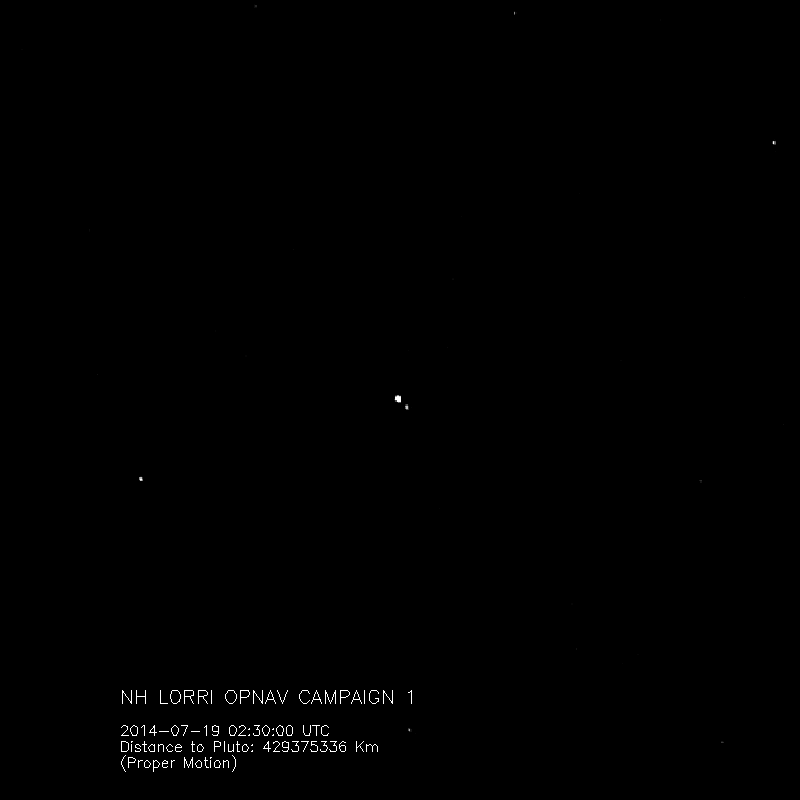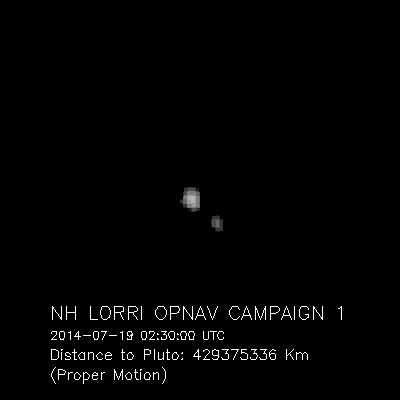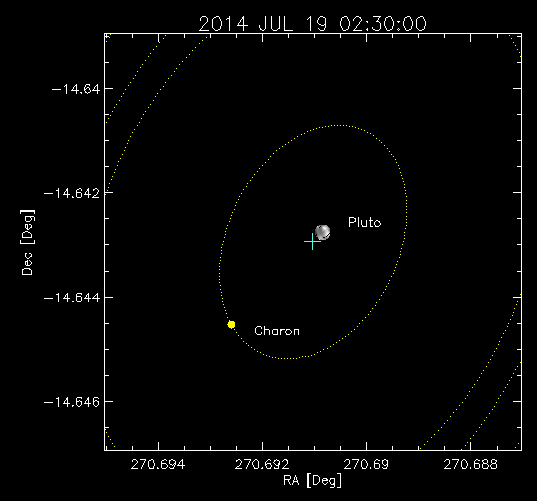Emily Lakdawalla • Aug 07, 2014
Twinkling worlds in motion: New Horizons' first optical navigation images of Pluto and Charon
What's that in the distance? A binary star? Those are two little round worlds dancing in circles, whirling around a point in space located between the two of them. It's Pluto and Charon, clearly separated by New Horizons' high-powered Long-Range Reconnaissance Imager (LORRI) camera.

What I think is especially cool about this animation is the fact that you can clearly see that neither Pluto nor Charon is still; Charon's mass is a large enough fraction of Pluto's that both are in a mutual orbit around a point in empty space, above Pluto's surface, called the system's barycenter. Here's a zoomed view that makes that even more obvious:
If you are wondering why Charon seems to be getting closer to and farther from Pluto, it's because we're looking at the system from an angle, so the circular motions of Pluto and Charon appear ellitpical. Here's a diagram that may help:
These photos weren't just taken for their coolness value, but they're not exactly for science, either. They're to help steer New Horizons and to reduce the uncertainty in our estimates of Pluto and its moons' positions in the sky. I described the reasons for these optical navigation photos in a post a few weeks ago.
You may notice that Pluto and Charon seem closer to each other in the LORRI photos than they appear in the simulated view. A key point is that LORRI is just barely resolving Pluto in these images. At a range of 422495617 kilometers and an angular resolution of 4.95 microradians, each pixel spans 2090 kilometers. Pluto is about 2300 kilometers across -- barely more than one pixel. But you can see that its light shows up on several pixels, which is why the two worlds seem closer than they are. That's normal; even point light sources like stars spread out across more than one pixel in digital cameras. How much the light from a point source spreads is described mathematically by something called the point spread function. Every camera is a little different. Point sources in LORRI images appear slightly more spread out than point sources in Cassini images, so when I look at LORRI and Cassini images it feels like LORRI images are slightly blurrier. But the spread of a point light source is very precisely described mathematically, so it's very easy to sharpen LORRI images (as well as Cassini and Hubble and any other space camera images) with image processing software.
Sharpening these photos won't get us any details on Pluto's surface, though. We have to wait many many months -- really until just days before the encounter -- to see what kind of features Pluto has. I'm feeling very impatient! These photos are so thrilling -- it's the first moment that really marks the transition of Pluto from an astronomical object to a geological one. But they've just whetted my appetite -- I can't wait to see more of what this distant system has to show us.
The Time is Now.
As a Planetary Defender, you’re part of our mission to decrease the risk of Earth being hit by an asteroid or comet.
Donate Today

 Explore Worlds
Explore Worlds Find Life
Find Life Defend Earth
Defend Earth



